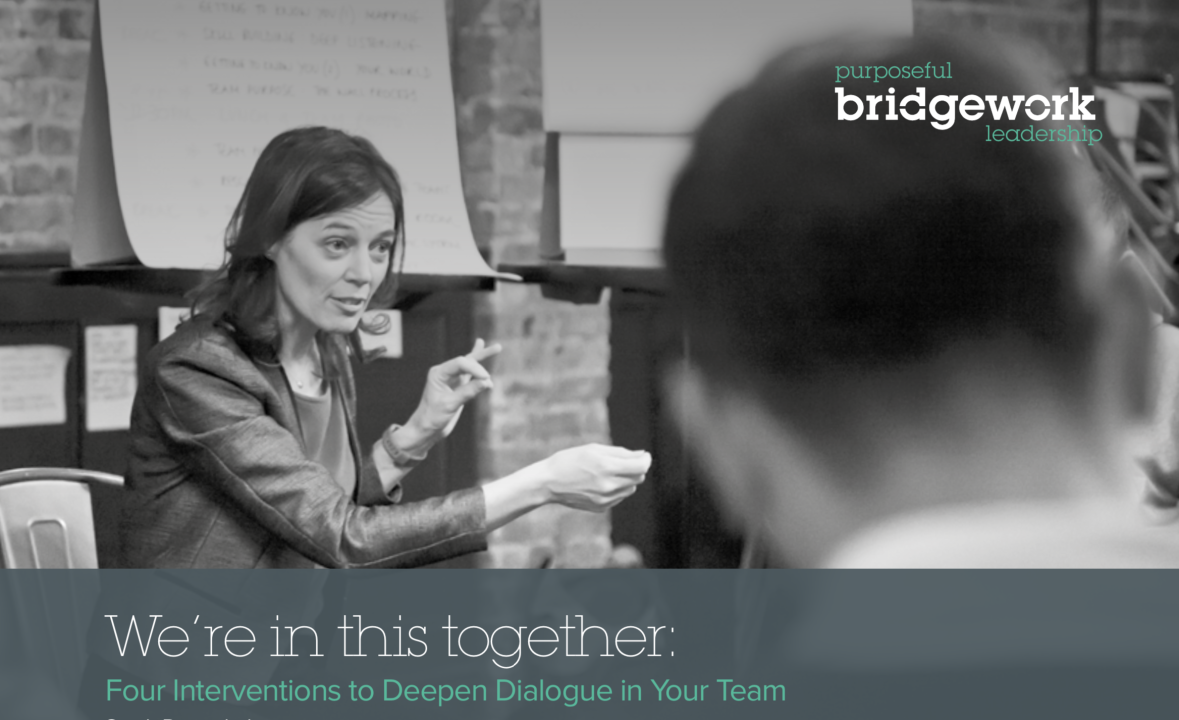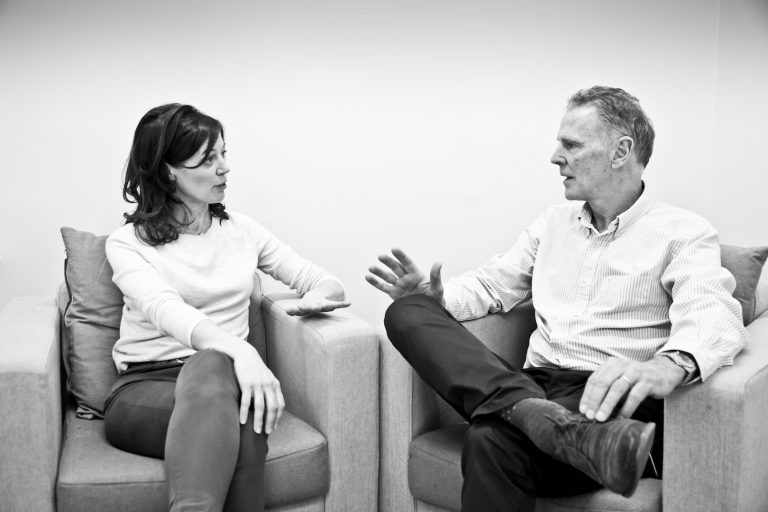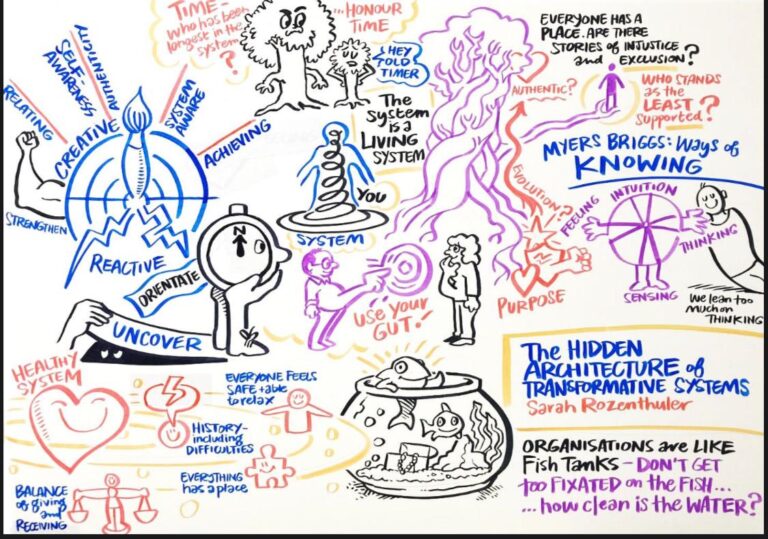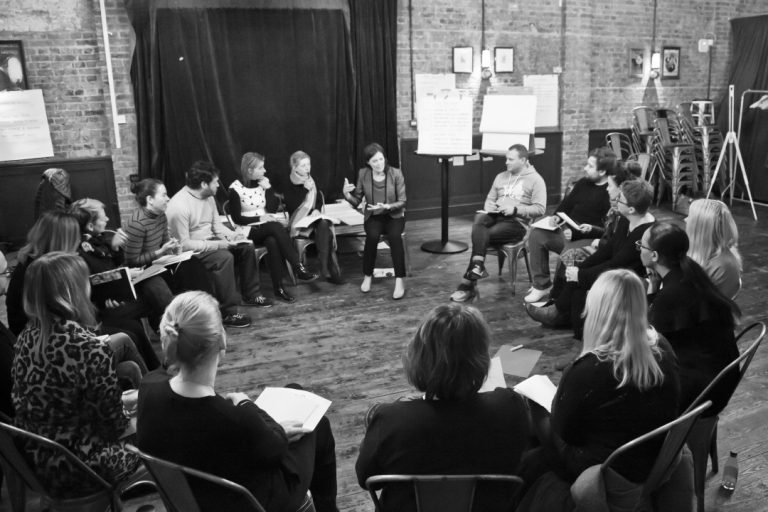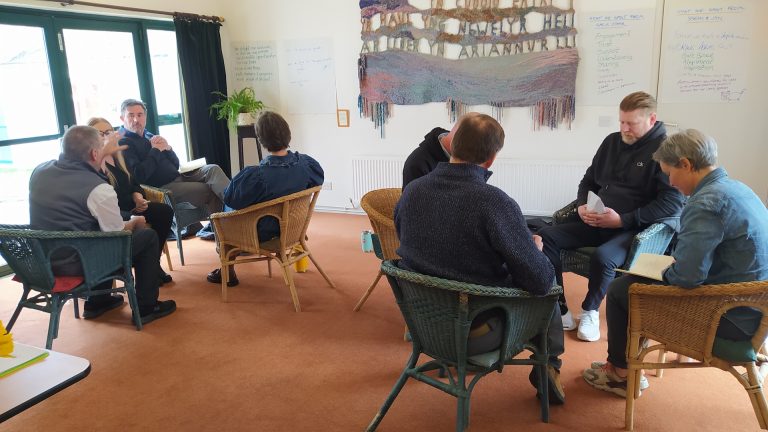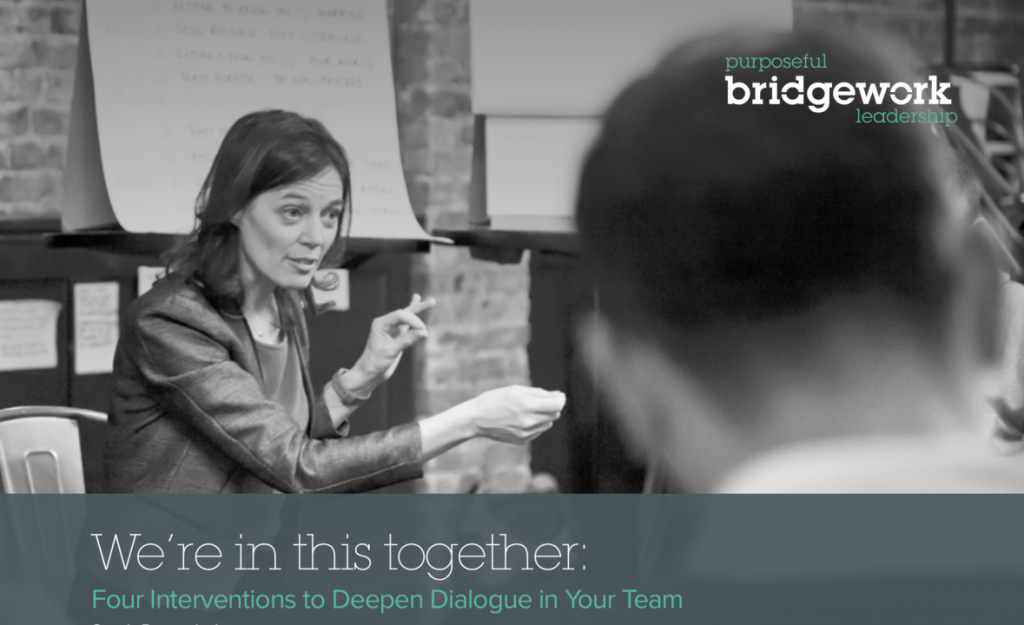
Sarah Rozenthuler, CEO Bridgework Consulting, coaching a leadership team to have better dialogue
What makes dialogue different to other types of talking? This article explores four different types of verbal interaction. Understanding this helps leaders and teams to carve out the time they need to talk.
Not every exchange of words is a dialogue. A shouting match is not a dialogue. A debate in Parliament is not a dialogue. A presentation with a short question-and-answer session tacked on at the end is not a dialogue. Two people talking over each other and not listening is not a dialogue. As it has been said, “Two monologues do not make a dialogue.”
One way to understand dialogue is to explore how it differs from other forms of conversation. Understanding these different types of verbal interaction, which are laid out in the Conversation Continuum below, helps leaders and teams to carve out the time that true dialogue calls for.
Without dialogue, leaders will continue to do what they’ve always done. Whether this is short-term thinking and quarterly reporting, ruthless cost-cutting to maximise profit or focusing solely on shareholders at the expense of ignoring other stakeholders, different outcomes will only emerge when leaders think and talk together differently.
Four types of verbal interaction
Moving from the simplest form of verbal interaction (monologue) to the most skilled (dialogue), the four different types of communication are:
- Monologue. One person speaks and the other/s listen. A leader holding a ‘townhall’ to transmit a message to a large audience can be an effective way to communicate. The risk is, however, that the other people aren’t fully engaged. The speaker is often ‘downloading’ information that they already know and others switch off.
- Debate. An exchange where one person puts forward an argument to support their point of view and another challenges it with a counter-argument. Whist this can be lively as people ‘nail their colours to the mast’, it often results in people taking fixed positions and becoming entrenched. The combative atmosphere limits learning.
- Discussion. A conversation where people analyse options and try to decide on a way forward. The root of the word ‘discussion’ is the same as ‘percussion’ and ‘concussion’ and means to ‘shake apart’ or ‘break down.’ Whilst a discussion can be a useful way to explore the respective pros and cons, it rarely leads to fresh thinking.
- Dialogue. A meaningful conversation where people think together about new possibilities. Coming from the Greek, dia,meaning ‘through’ and logos meaning ‘word’, the essence of dialogue is the flow of meaning that comes through an exchange of words. When people slow down and speak about what is moving through them in-the-moment, new ideas and deeper insights emerge.
You’ll see that there’s a dotted line on the Continuum. Whilst many teams know how to have a monologue, debate or discussion, there is typically a threshold to cross in order for them to have a dialogue.
An authentic dialogue, whether about people, purpose or strategy, calls for new skills and a different mindset. There is a risk that we might think that authentic dialogue is about us sharing our every thought, judgment or feeling. It is not. Shooting from the hip (or the lip) will not take us there.
I share a few observations in a new Insights Paper about what I’ve learnt over the years about what makes an authentic dialogue actually take place. Before you read these, you might like to explore your own experience, to see what’s true for you. Think about a time you spoke with someone when there was a difficult issue to discuss and you were able to speak your truth as well as listen to the other person’s truth. How did you feel during the conversation? How did you feel after the conversation? What does this tell you?
You can download a new free Insights Paper on how to deepen dialogue in your team at the Bridgework Consulting website
